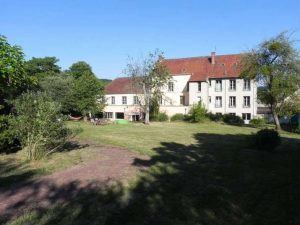“Ekapuggalo bhikkhave loke uppajjam?no uppajjati …….. Bhikkhus” – a certain person arises in the world for the welfare of many, for the happiness of many, out of compassion for the world, for the good, benefit and happiness of gods and men. Who is it? It is the Tathagata, Arahant Sammasambuddho (the Exalted One, fully Enlightened One).
2554 years ago in the full moon day of Visakha, which usually falls in May, our Sammasambuddha was born as prince Siddhartha, in the Lumbini Park at Kapilavatthu, on the Indian border of present Nepal. His father was king Suddhodana of the Sakya clan and his mother was queen Mah? Maya. On 27th May[1], the Buddhists all over the world are commemorating his birthday which usually known as Visakha day or Vesak Full Moon day. The Buddhist commemorate this Visakha day with a distinct feature than other days. Three important events took place in the life of the Lord Buddha on this same day; his birth, enlightenment and nibbana.
The prince Siddhartha renounced the household life at the age of 29. Six years wandered here and there in search of Truth.He met Al?ra K?l?ma and Uddhaka R?maputta, the two distinguished ascetics from whom he learned the ‘Realm of Nothingness’ (Akiñcaññ?yatana) and ‘Neither Perception nor non-Perception’ (Neva saññ? na saññ?yatana), the highest stage of concentration in those days.
Still he felt that his quest of Truth did not quench. He realized that his spiritual aspiration was higher than those under whom he chose to learn. Finally, he started to find out the Truth by himself and at the age of 35 he found out the Truth by his own efforts and wisdom under the Bodhi Tree at Bodh Gaya, India. He freed from all defilements, became a Buddha. He realized the dukkha and the cessation of dukkha.
After becoming Buddha he stared to share the truth with others. He started his teaching with the Dhammacakka Pavattana Sutta (The Turning of the wheel of Truth) which he discoursed to the group five ascetics (Pañcavaggiya) at the Deer Parkat Isipatana, at Benares of modern India. Then he preached the second discourse, Anatta Lakkhana Sutta (The Discourse on the Not-self Characteristic), to them. After hearing these two suttas, these five ascetics attained Arahantship. Later on, Yasa, his distinguished four friends and 50 more friends converted to Buddhism and all attained Arahanthood.
It is only two months elapsed since his enlightenment, the numbers of Arahants gradually rose to sixty in the world (including Buddha sixty one). Then the Buddha said,
“Go forth, O Bhikkhus, for the good of many, for the happiness of many, out of compassion for the world, for the good, benefit and happiness of gods and men. Let not go two by one way. Preach, O Bhikkhus, the Dhamma which is excellent in the beginning, excellent in the middle, excellent in the end, both in spirit and letter. Proclaim the holy life perfect and pure.”
Since that day forth, the number of his followers grew larger and larger. After his passing away into Nibbana at the age of 80, his distinguished disciples (The Sangha) are carrying out the message of his Truth throughout the world.
This month, millions of Buddhists all over the world are commemorating his birthday, enlightenment and entering into Nibbana during this Visakha festival. In temples Buddhists observe five precept (Pañcas?la), Eight precepts (Atthas?la), worship, offer flowers, light lamps and burn incense. People send greeting cards (Vesak card) to each other on this auspicious occasion. Many temples and associations conduct Dhamma talks, stall on the roadside distribute free refreshments to passers-by. They share their happiness and compassion with others.
Buddha’s universal message of non-violence, goodwill and compassion towards all sentient beings touched millions of people around the world. His message is today more relevant than ever before. The recognition of the Day of Visakha by the United Nations would go a long way towards peace, understanding and tolerance of the diversity nature of beings. Lets us recall, once more, the Buddha through his universal message of tolerance and compassion and the law of Dhamma as he said “he who sees the dhamma sees me, he who sees me sees the Dhamma”.
[1] . Though the exact date is vary country to country and traditions.












